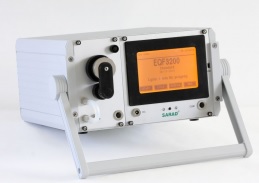

EQF 3200 :: Radon/Thoron gas and daughter product monitor
The EQF 3200 is the ideal monitor to evaluate the availability of radon and its expected dose. The device defines the concentration of gas and decay products for Radon and Thoron, in order to calculate the equivalent factor.
The EQF 3200 is equipped with instrument grade semiconductor radiation detectors, both in the Radon measurement chamber and the sampling head for the decay products. This allows a perfect separation of the different decay products of Radon, using Alpha spectroscopy.
The fine pored membrane filter of the newly developed sampling head is exchangeable without any tool. The reinforced filter is used in combination with an automatically controlled rotary vane pump that guarantees a constant air flow through the filter. A sensor measures permanently the air pressure over the filter in order to recognize instantly an exhausted or perforated filter.
The measurement chamber works following the principle of high-tension separation and has, despite its low volume, an extraordinary sensitivity. This means a decisive advantage when it comes to measuring small Thoron probe volumes. The long-term contamination by the increasing Po-210 underground that appears in other measurement principles is completely annulated. There is no cross-sensitivity regarding the ambient radiation. The chamber is immune to humidity changes of the environment. This is why a desiccation cartridge, as needed in other devices working following the principle of high-tension separation, is not necessary in the EQF 3200.
The quality control is a main issue of any radiation measurement. Therefore the EQF 3200 records a complete alpha spectrum for each measured value. This allows controlling the perfect functioning of the instrument in each moment of the measurement.
The EQF 3200 disposes of a big touch-screen, showing the measured values. All measured data are stored in a 2 GB memory card and are available from your PC or laptop through a USB interface. Data transmission and device control can be done by radio modems, as well as via ZigBee adapter (short range wireless network). A NaI detector to fix the local Gamma dose is an optional feature of the device. The EQF 3200 disposes of additional input and output terminals to connect sensors and actuators according to client-specific needs. The data sheet shows some examples.
Accessories
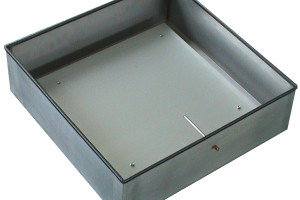
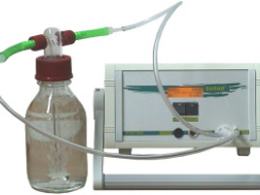
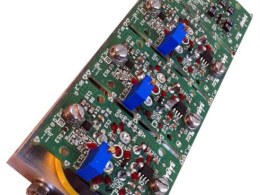
Due to the big number of target gases, different measurement principals with different behaviour regarding range, uncertainty, cross sensitivity and ambient conditions must be considered. Each user should clarify in advance the conditions and requirements for his application to select the best suited sensor.
Beside very complex and expensive analysis methods like gas chromatography or infrared gas spectroscopy, three major measurement principals are commonly used for monitoring and testing:
- non-dispersive infrared spectroscopy
- semiconductor detectors based on metal oxide
- electrochemical sensors
- Oxygen (O2)
- Carbon Dioxid (CO2)
- Carbon Monoxid (CO)
- Methane (CH4)
- combustible gases (Methane, Propane, Buthane …)
- Hydrogen Sulfide (H2S)
- Sulfur Dioxid (SO2)
- Nitrogene Monoxid (NO)
- Nitrogene Dioxid (NO2)
- Chlorine (Cl2)
- Hydrogen Cyanide (HCN)
- Phosphene (PH3)
- Hydrogen Chloride (HCl) / Hygrogen Bromide (HBr)
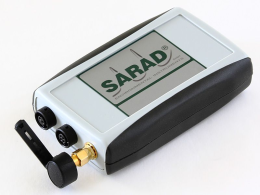
With Net Monitors it is possible to implement a wireless local network for SARAD instruments, or simple to read out the data without a cable connection. The range of the radio link is several hundred meters in case of a free line of sight. For stationary linking, the range can be extended by directional antennas. A PC adapter, called “coordinator” and at least one instrument adapter (endpoint) are required to create the network. The coordinator is connected to the PC by a USB cable. The instrument adapter can be connected to the serial interface (RS232) of the instruments. The link cable is included in the delivery. To power the instrument adapter, either the internal replaceable batteries or an AC/DC wall adapter can be used. The batteries enable an autonomous operation of several weeks. Many instruments are already equipped with an internal instrument adapter.
As soon as an instrument enters the link range of a coordinator, it will be automatically linked into the network. All SARAD software products contain already the network functionality. The communication takes place in the same way like through a cable connection. The only difference is that before any action which requires the communication with the instrument, a selection table with all linked instrument appears on the screen.
The network uses a similar standard like the WLAN with a maximum link power of 100 mW. The endpoint does not send any information as long it is not in the link range of a coordinator.

This reliable system for soil gas sampling contains a soil gas probe and a manually operated soil gas pump. Compared with simple beat probes, the tightness against the ambient air is realised by an inflatable rubber tube. To insert the probe, a hole with a diameter of 60mm must be drilled before. The soil gas pump is uses to pressure the tube as well as to determine the permeability of the soil by measurement of the fall time of the pump handle. Tube connectors allow the direct connection of a Radon or soil gas monitor. All parts are very robust and manufactured from stainless steel and aluminium. The probe can be extended by 1 Meter tube pieces.
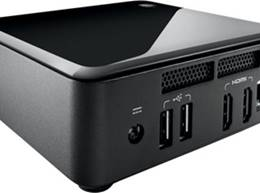
The software solutions Radon Vision (from version 6.2.0) and dVISION/dCONFIG (from version 3.3.1) contain a complete solution for TCP/IP based communication with the most of SARAD instruments. The Implementation is very easy and does not require special skills in the IT field.
The IP-Box, in fact, is a robust, tiny (15mm x 111mm x 51mm), pre-configured computer with SSD and Windows operational system. The program Instrument Server is already installed in the auto-start folder of Windows (see also application note AN-008: Internet based monitoring networks for SARAD instruments). It will be opened automatically after turning on the power. The IP-Box is equipped with several USB and serial ports to connect the instruments. The connection to the internet can be realized either by LAN cable or WiFi. The WiFi adapter is integrated in the IP-Box.
